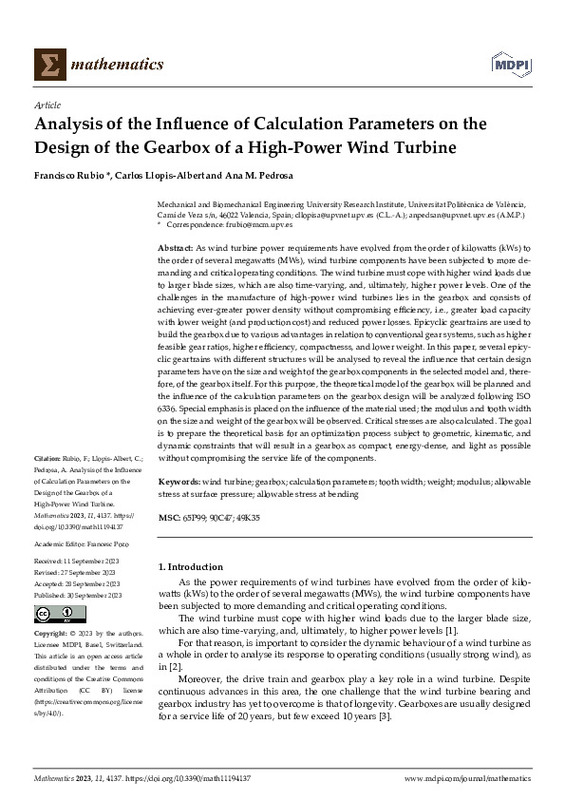JavaScript is disabled for your browser. Some features of this site may not work without it.
Buscar en RiuNet
Listar
Mi cuenta
Estadísticas
Ayuda RiuNet
Admin. UPV
Analysis of the Influence of Calculation Parameters on the Design of the Gearbox of a High-Power Wind Turbine
Mostrar el registro completo del ítem
Rubio Montoya, FJ.; Llopis-Albert, C.; Pedrosa, AM. (2023). Analysis of the Influence of Calculation Parameters on the Design of the Gearbox of a High-Power Wind Turbine. Mathematics. 11(19):1-19. https://doi.org/10.3390/math11194137
Por favor, use este identificador para citar o enlazar este ítem: http://hdl.handle.net/10251/201345
Ficheros en el ítem
Metadatos del ítem
| Título: | Analysis of the Influence of Calculation Parameters on the Design of the Gearbox of a High-Power Wind Turbine | |
| Autor: | ||
| Entidad UPV: |
|
|
| Fecha difusión: |
|
|
| Resumen: |
[EN] As wind turbine power requirements have evolved from the order of kilowatts (kWs) to the order of several megawatts (MWs), wind turbine components have been subjected to more demanding and critical operating conditions. ...[+]
|
|
| Palabras clave: |
|
|
| Derechos de uso: | Reconocimiento (by) | |
| Fuente: |
|
|
| DOI: |
|
|
| Editorial: |
|
|
| Versión del editor: | https://doi.org/10.3390/math11194137 | |
| Tipo: |
|









